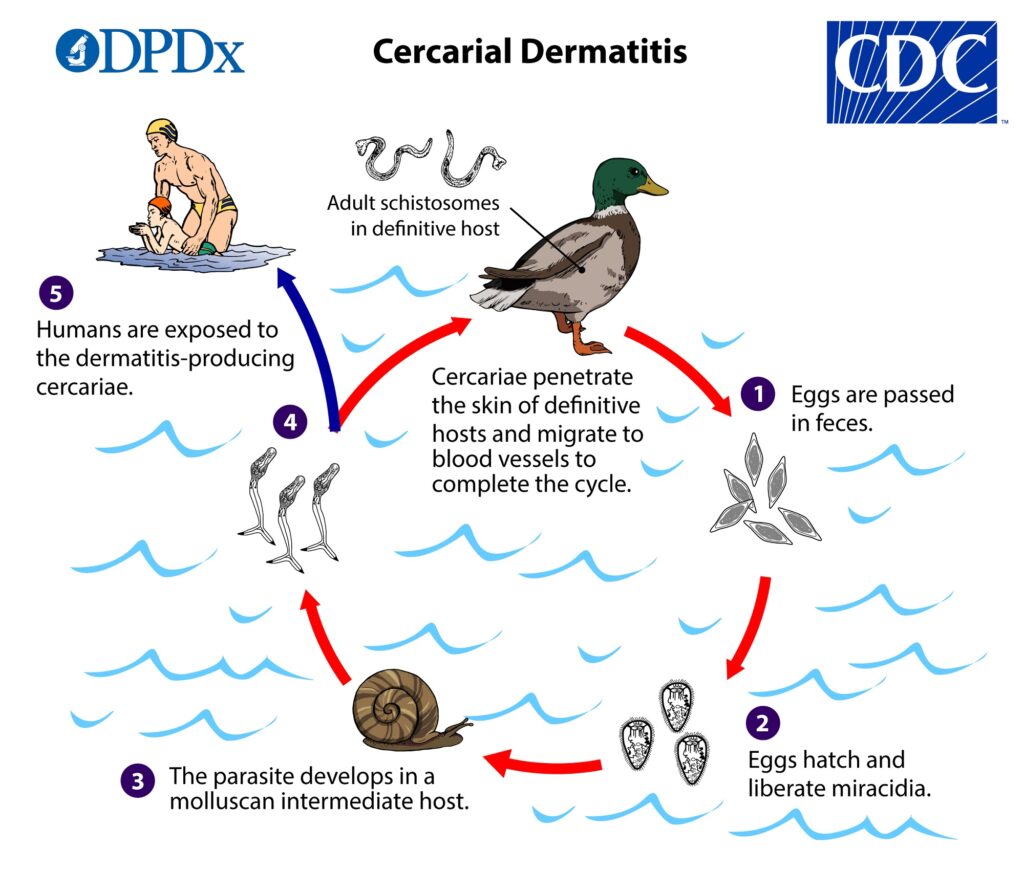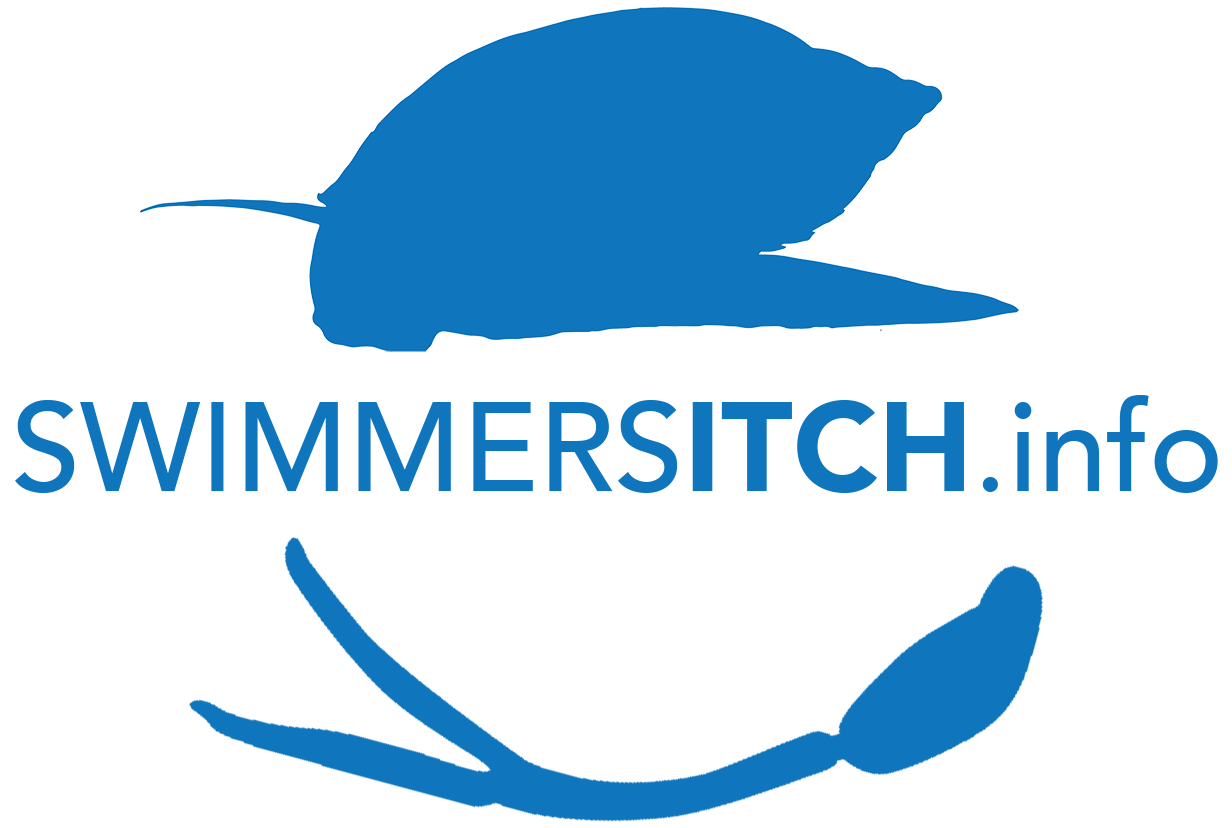What is swimmer’s itch?
The rash we refer to as “Swimmer’s Itch” or “Cercarial Dermatitis” is the result of an allergic reaction in the skin caused when the cercariae, or larvae of the trematode parasite, enters human skin. Note the individual red bumps (see images below) resulting from where each individual cercariae has penetrated. The severity of the rash can vary from person to person, depending on several factors, including level of exposure (how may parasites were in the water directly near you) and exposure history (past exposure episodes/cases of swimmer’s itch). For some individuals, multiple exposures can cause heightened allergic responses and therefore increased rash severity. The rash can last several days up to several weeks. It is very important to not scratch, despite the itchiness, because scratching can lead to a bacterial infection. For most cases of swimmer’s itch, it is recommended to use an everyday type of itch cream such as Calamine Lotion or a mixture of Baking Soda and water. If these remedies do not work, it is recommended to try a Cortizone cream. If these treatments do not work or conditions worsen, please inform your doctor.
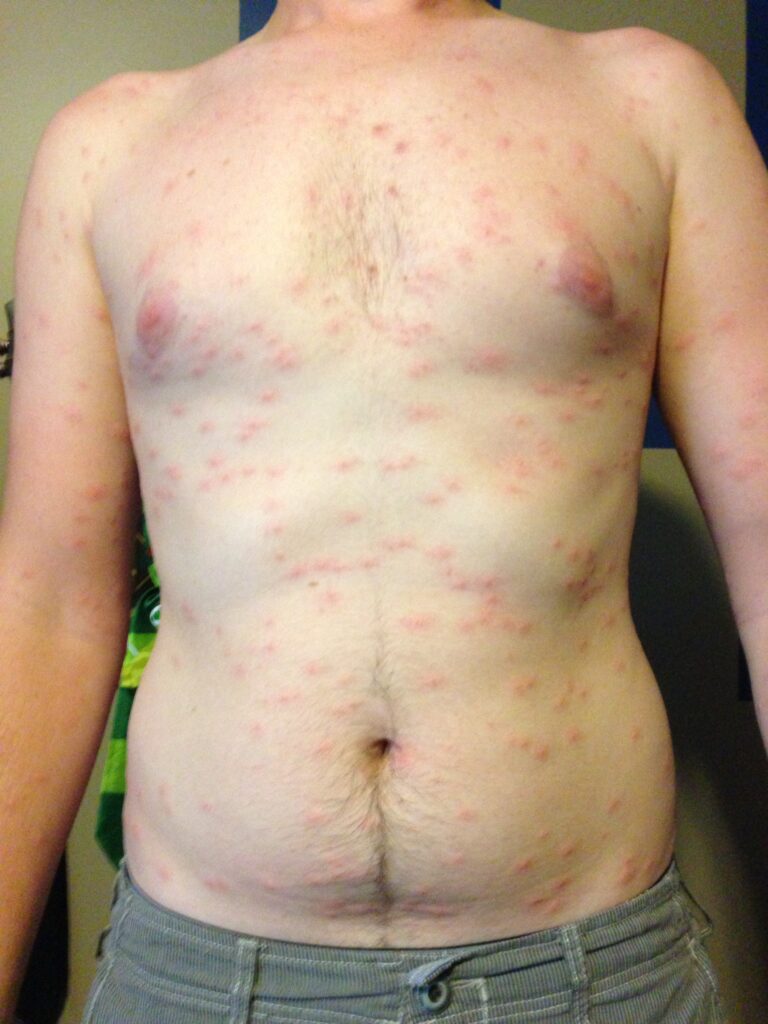
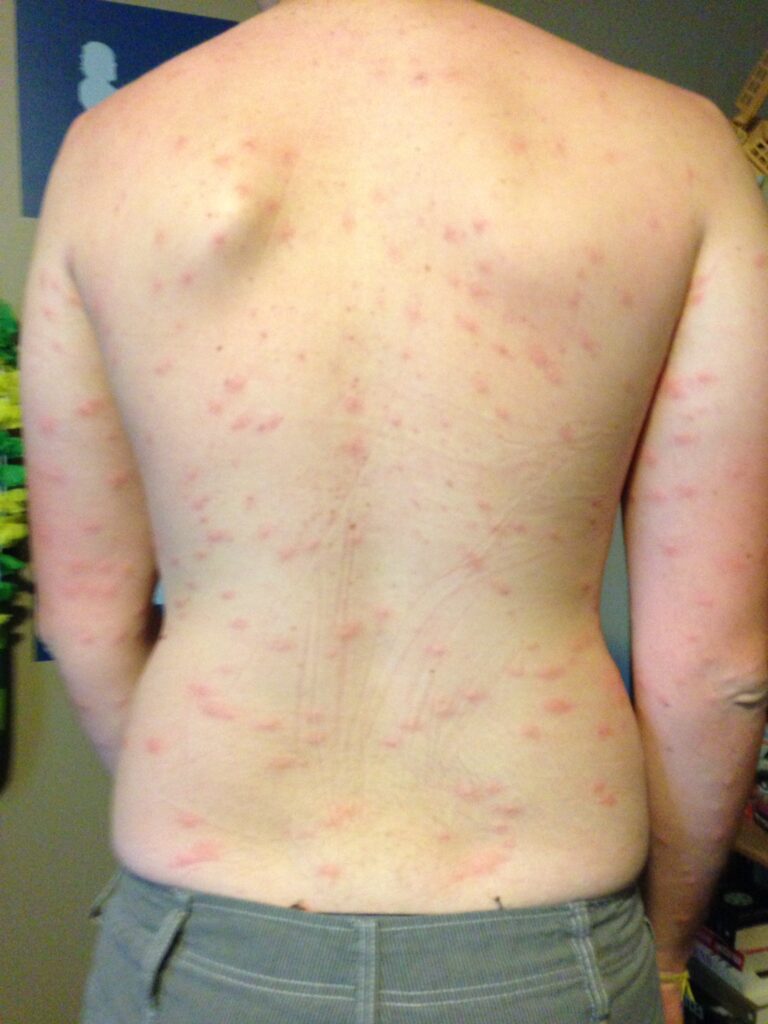
The parasites that cause swimmer’s itch are members of a larger group of parasites called schistosomes, some of which can infect humans (but not the ones that cause itch). These parasites are small and require a microscope to see.
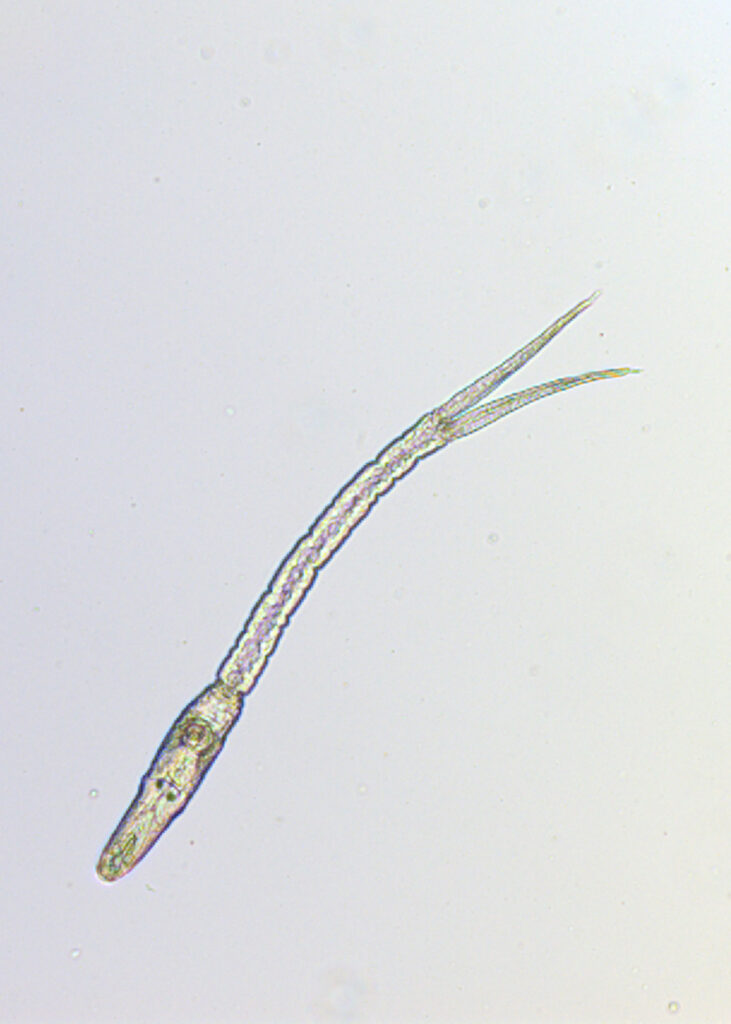
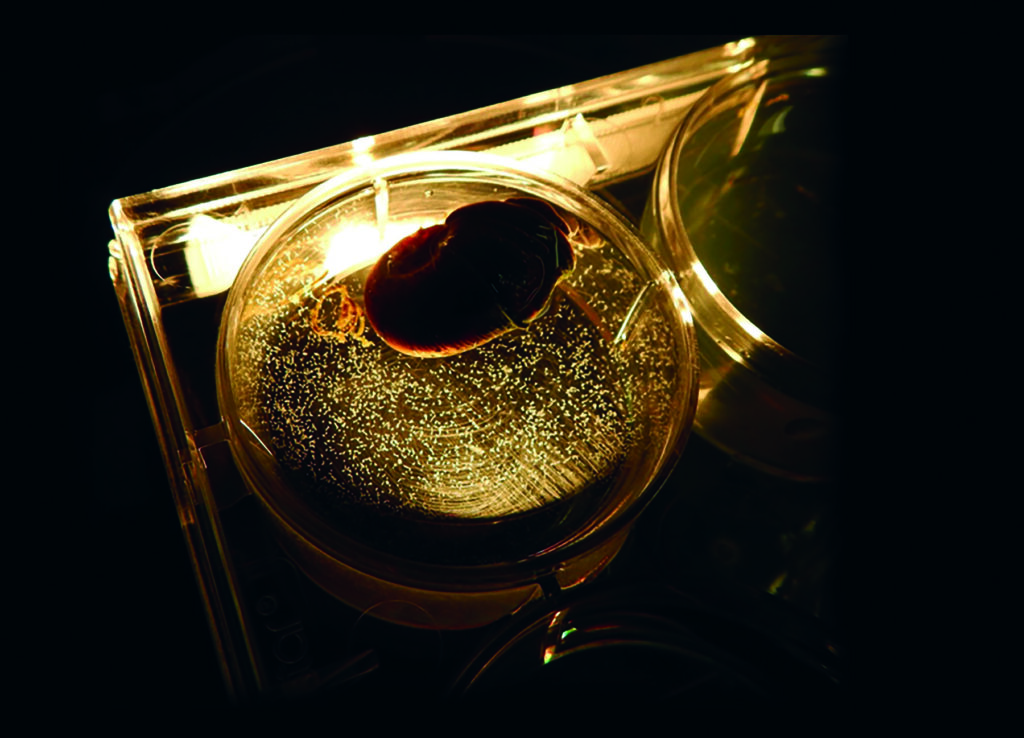
It is the larval stages of the parasites that cause swimmer’s itch when they mistakenly penetrate the skin of a swimmer. These larval parasites are released (shed) from infected snails. Numerous species of swimmer’s itch-causing parasite are found throughout the world and each can infect a specific species of snail.
